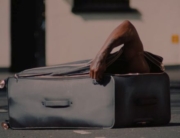
If there were a modern visual comparison for the Palace of Versailles, Ottolenghi and the Cakes of Versailles believes it would be Instagram. Like our relentlessly sharable digital media world, Versailles served as an epicenter for the French monarchy to flaunt its wealth, excess, and cultural dominance in the 17th and 18th centuries. This included the preparation of food. Pastries and cakes served at the court of Louis XIV and his descendants looked better than they tasted but boasted an artistic merit for its icing and fondant decorations that showcased just how good the wealthy had it.
Director Laura Gabbert attempts to psychoanalyze this historical legacy alongside Yotam Ottolenghi, a renowned Israeli-British chef and cookbook author who was tasked by the Metropolitan Museum of Art to prepare a dessert panel for their 2018 Visitors to Versailles exhibition. Ottolenghi assembled a team of pastry chefs from the farthest corners of the internet, all of whom possess unique ways of pushing the boundaries of cooking and visual art.
Some, like Tunisian chef Ghaya Oliveira and cronut creator Dominique Ansel, specialize in updating traditional French dishes for contemporary audiences. Others work with a bit more pizazz, including Ukrainian chef Dinara Kasko, who uses an architecture degree to build cakes with unorthodox molds; Singaporean Janice Wong, who creates edible artwork from chocolate; and the British gelatin duo Bompas and Parr.
At just 75 minutes, this film sadly doesn’t offer much time to unlock a full picture of its various chefs’ backgrounds. Beyond some origin stories, they pop up occasionally to explain why each one entered the culinary arts and how their approach to baking reflects the innovative nature of pâtissiers. Ottolenghi’s story fares a bit better. In quieter moments, he reflects on his childhood artistic influences and the struggles of overcoming culinary school as both a foreigner and a gay man. His approach to cooking, much like his cookbooks, is that of an anthropologist, regularly seeking the lineage behind recipes to give each meal a powerful story to accompany its great taste.
Despite its short runtime, Ottolenghi paints an easy to follow picture of how pastries in the 1700s were a window into the power of the French one percent. Compared to how easy it is to obtain food from modern supermarkets, Louis XIV and his descendants lived in an era where sugar was scarce, cake dough was pasta-like in texture, and chocolate, the most commonplace of junk food, was reserved for kings. Even jellies, as explained by Bompas and Parr, helped the wealthy capture a fruit’s essence thanks to their closed access to sugar.
Versailles’ confectionaries were essentially semi-edible props stacked or shaped vertically for all to see in hopes that envious travelers would spread news of the monarchy’s status across Europe and beyond. Ironically, this “food to status” ideology would prove their undoing, with bread shortages contributing to the French Revolution and the subsequent execution of Versailles’ final royal residents.
What Ottolenghi gives viewers is basically prestige food porn, but one could say Versailles invented that concept almost 350 years ago. Gabbert regularly captures the elegance and obliqueness of his team’s cuisines, their bizarre molds and flavors generating all the appeal of staring at dessert displays through a shop window. I do wish there was a bit more time to covering how the chefs prepared their food, as what we get weirdly feels like something out of Chopped. The night before the tasting event, Kasko’s attempt to create a mousse ends in failure because a Met cook adds ingredients against her wishes, and I wouldn’t have been shocked if the camera had cut to an angry interview afterwards.
If the goal of Ottolenghi and the Cakes of Versailles was to make you hungry, then mission accomplished. If the film also makes you yearn for the days of visiting a museum before the coronavirus pandemic, then it succeeds in ways not originally anticipated. Ultimately, the documentary is an exploration of how food doubles as art and history, a Rosetta Stone for the glory days of Versailles before it devolved from a symbol of global envy to one of domestic inequity. “Let them eat cake” is one way to describe it; the other, to quote Robert Frost’s iconic poem, is “Nothing gold can stay.”
















Leave A Comment